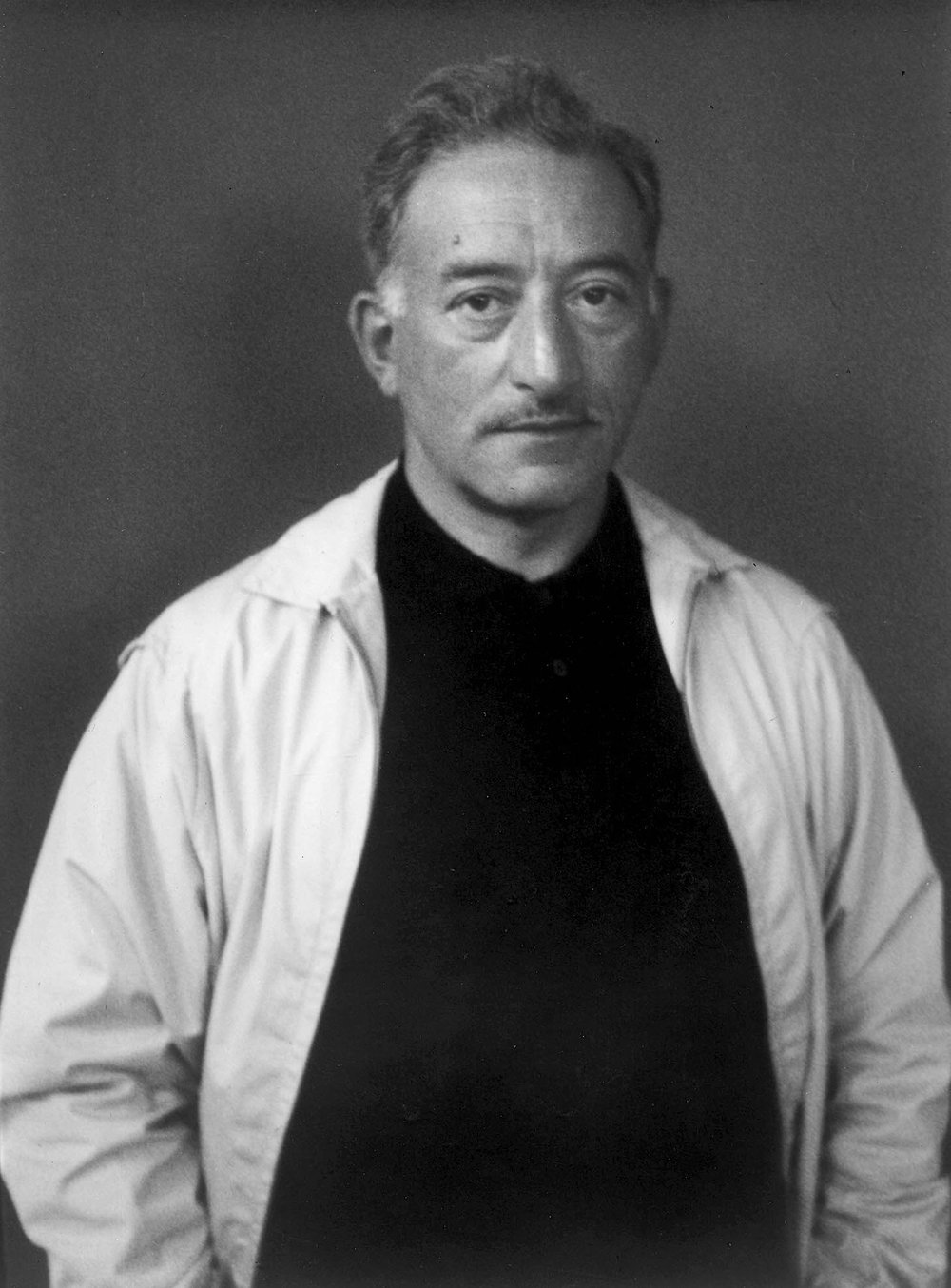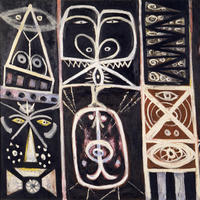More about Adolph Gottlieb
Works by Adolph Gottlieb

Contributor
Adolph Gottlieb was an abstract artist who kicked up a storm in New York City with buddies like Mark Rothko and Barnett Newman.
Born in New York City in 1903, Gottlieb got his start at the Art Students’ League in 1920 with John Sloan. At the age of seventeen he dropped out of school to travel abroad. Gottlieb ended up in Paris, studying art and visiting the Louvre every day. The trip impacted him immensely and when he returned State-side in 1923 he made it clear to his parents that he wasn’t going to carry on with the family’s stationery business, and instead intended to be an artist. Without the family paycheck coming in, Gottlieb financed his new artistic career by working briefly as a camp instructor teaching arts and crafts to children, retouching photos, and painting signs.
In 1935, Gottlieb became a part of “The Ten,” which originally had nine members. Though some of their members, including Gottlieb, would come to be known for their abstract works, the group was devoted to expressionism. That same year, Gottlieb joined the Artist’s Congress, though he resigned four years later in protest over the group's political activities. He was a founding member of the Federation of Modern Painters and Sculptors, and in 1944 he served as president of the group. It’s safe to say Gottlieb liked to involve himself in the movements of contemporary American artists of the time.
With assistance from Barnett Newman, Mark Rothko and Gottlieb drafted a letter to the New York Times art critic Edward Jewell about the goals of the modern American artist. Jewell had been antagonizing the work exhibited at the Federation of Modern Painters and Sculptors for too long, criticizing both Gottlieb’s The Rape of Persephone and Rothko’s The Syrian Bull. Taking the higher road, Jewell publicly apologized and reprinted parts of the letter in the New York Times eleven days after his public admission. Rather than defending their criticized paintings specifically, the artists defended their approach, writing: “The world of the imagination is fancy-free and violently opposed to common sense.”
Gottlieb looked outside of America for inspiration as the belief at the time was that American art lacked historical tradition. Literature, Greek and Roman mythology, and primitive art influenced this generation of artists, and Gottlieb himself was especially influenced by Native American art, and also collected African sculptures. While many of his peers lived in Manhattan, Gottlieb lived in Brooklyn from 1932 to 1956, believing the pace here was less hectic. It was in the 1930s that his work veered toward the abstract, having been influenced by Surrealism, Cubism, and the psychoanalysts Sigmund Freud and Carl Jung. By 1941, their teachings would be evident in Gottlieb’s seminal “Pictograph” paintings.
Esther Gottlieb was a wonderful influence on Gottlieb’s career. The two married in 1932, and Esther financially supported her husband by working a series of odd jobs. When Gottlieb suffered a stroke in 1971 and became wheelchair-bound, only able to move his right arm, it was Esther who helped Adolph paint. Her impact on Gottlieb also expanded onto his circle of struggling artist friends. Whatever money she gave Gottlieb, he often shared with Mark Rothko and the sculptor David Smith. It was the 1930s and it wasn’t a good time to be without an income thanks to the massive economic crisis of the Great Depression. In 1976, two years after Gottlieb’s death, a charity was established in his and Esther's names to help artists who were struggling financially.
Sources
- Alloway, Lawrence, MacNaughton, Mary Davis. Adolph Gottlieb: A Retrospective. New York, The Arts Publisher, Inc., 1995.
- Don Celender, “Reluctant symbolist,” New York Magazine, February 7, 1977. Accessed September 19, 2021. https://books.google.com.au/books?id=BeQCAAAAMBAJ&pg=PA63&dq=%22adolph+…
- McGlynn, Tom, “The Adolph and Esther Gottlieb Foundation,” Brooklyn Rail, July-August 2019. Accessed September 17, 2021. https://brooklynrail.org/2019/07/artonic/The-Adolph-and-Esther-Gottlieb…
- Meldrum, Andrew, “Stealing beauty,” The Guardian, March 15, 2006. Accessed September 20, 2021. https://www.theguardian.com/artanddesign/2006/mar/15/art
- Roberts, Kathaleen, “Exhibition showcases the last works of Adolph Gottlieb,” Albuquerque Journal, February 5, 2017. Accessed September 17, 2021. https://www.abqjournal.com/942945/final-forms.html
Featured Content
Here is what Wikipedia says about Adolph Gottlieb
Adolph Gottlieb (March 14, 1903 – March 4, 1974) was an American abstract expressionist painter who also made sculpture and became a printmaker.
Check out the full Wikipedia article about Adolph Gottlieb











